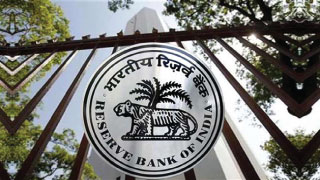- Home
- Business Processes
- Industry Knowledge
- Aerospace Industry
- Automotive Industry
- Banking Domain
- BFSI Industry
- Consumer/ FMCG Industry
- Chemicals Industry
- Engineering & Construction
- Energy Industry
- Education Domain
- Finance Domain
- Hospitality Domain
- Healthcare Industry
- Insurance Domain
- Retail Industry
- Travel and Tourism Domain
- Telecom Industry
- Leadership Skills
- eLearning
- Home
- Domain Knowledge
- Banking Domain
- Banking Operations: Understanding the Regulatory Framework
Banking Operations: Understanding the Regulatory Framework
When a bank fails, the depositors suffer as much or more than the bank’s owners. Failure of one large bank can trigger losses across the boundaries of nations. This makes the banking industry an excellent candidate for government regulations. Bank’s lending policy directly impacts the economy, especially during economic downswing & upswings. Acting overly cautious, they restrict funds availability, and taking more risks can create the inflationary boom. Let us explore various banking regulations and how they safeguard our interests as consumers.
Protecting banks and bank customers from bank failures is the aim of most government banking regulations. Government regulations strive to protect bank depositors and other stakeholders from bank failures and to encourage banks to become a stabilizing force in the economy. Commercial banks are institutions dealing with money. These are governed by various regulations prescribed in each country to regulate the banking industry, for example, in India banks are governed under the Indian Banking Regulation Act, 1949.
What are Bank Regulations?
 Bank regulations are a form of government regulation that subjects banks to certain requirements, restrictions, policies, procedures, standards, disclosures, and guidelines. This regulatory structure creates transparency between banking institutions and the individuals & corporations with whom they conduct business.
Bank regulations are a form of government regulation that subjects banks to certain requirements, restrictions, policies, procedures, standards, disclosures, and guidelines. This regulatory structure creates transparency between banking institutions and the individuals & corporations with whom they conduct business.
Why we need Banking Regulations?
 Banking is commonly treated as a matter of public interest. The banking industry is tightly regulated by various laws and regulations (prescribed and enforced by various governments) that controls and influences many aspects of banking. This article explains how bank regulations have evolved across the globe to serve numerous goals. The fundamental rationale for exercising fairly close regulation and supervision of banking institutions, all over the world, is premised on the notion that the banks are "too big to fail". This originates from the fact that many financial institutions (particularly investment banks with a commercial arm) hold too much influence and control over the economy to fail without enormous consequences. The belief is that if not regulated, there exists a risk of banking institutions being crippled creating rippling effects throughout the economy.
Banking is commonly treated as a matter of public interest. The banking industry is tightly regulated by various laws and regulations (prescribed and enforced by various governments) that controls and influences many aspects of banking. This article explains how bank regulations have evolved across the globe to serve numerous goals. The fundamental rationale for exercising fairly close regulation and supervision of banking institutions, all over the world, is premised on the notion that the banks are "too big to fail". This originates from the fact that many financial institutions (particularly investment banks with a commercial arm) hold too much influence and control over the economy to fail without enormous consequences. The belief is that if not regulated, there exists a risk of banking institutions being crippled creating rippling effects throughout the economy.
Banks & Financial Stability of System
 This enormous influence that banks hold over the economy is because banks are very important and special institutions. They accept public deposits without offering any collateral security, run the payment and settlement system, and are an important channel for monetary policy transmission. Through a combination of lending and deposit activities, the banking system can affect the aggregate supply of money and credit, making banks a crucial link in the monetary mechanism and in the overall condition of the economy. Banks are the keystone in the edifice of the financial stability of the system. Ensuring the safety and soundness of the banking system, therefore, becomes a predominant objective of the financial regulators.
This enormous influence that banks hold over the economy is because banks are very important and special institutions. They accept public deposits without offering any collateral security, run the payment and settlement system, and are an important channel for monetary policy transmission. Through a combination of lending and deposit activities, the banking system can affect the aggregate supply of money and credit, making banks a crucial link in the monetary mechanism and in the overall condition of the economy. Banks are the keystone in the edifice of the financial stability of the system. Ensuring the safety and soundness of the banking system, therefore, becomes a predominant objective of the financial regulators.
Objectives of Bank Regulation
The objectives of bank regulation, and the emphasis, vary between jurisdictions. The most common objectives are:
 Prudential (Protection of Depositors): Deposits held by banks belong to public at large and it needs to be protected, hence the need for the regulation. Banking in most countries works on the concept of fractional reserve system where deposits are only partially backed by the reserves. The objective of such a regulation is to reduce the level of risk to depositors.
Prudential (Protection of Depositors): Deposits held by banks belong to public at large and it needs to be protected, hence the need for the regulation. Banking in most countries works on the concept of fractional reserve system where deposits are only partially backed by the reserves. The objective of such a regulation is to reduce the level of risk to depositors.
Systemic Risk Reduction: Banking regulations are enforced to ensure that fluctuations in business activity and issues at an individual bank do not impact the flow of transactions across the economy as a whole.
Efficient and Competitive Financial System: Regulatory framework encourages competition and ensures an adequate level of banking services throughout the economy. Another objective of regulations is to enable a competitive environment conducive to changing economic conditions and technological advances.
Avoiding Money Laundering: Another aim of banking regulations is to avoid the misuse of banks to disguise the true source of funds or disguise the ultimate disposition of the funds. This also ensures that banks are not used for criminal purposes.
Credit Allocation: Banking plays an important role in the economic development of any nation and Central Banks play an active role to ensure credit to productive sectors of the economy, as well as taking care of neglected sectors that may impact large segments of the population or employment-intensive sectors such as agriculture or small enterprises.

Areas of Banking Regulations
 Banking regulations can vary widely across nations and jurisdictions. This section of the article describes general areas and underlying principles of bank regulations, which are mostly used throughout the world.
Banking regulations can vary widely across nations and jurisdictions. This section of the article describes general areas and underlying principles of bank regulations, which are mostly used throughout the world.
- Minimum requirements like maintaining minimum capital ratios
- Supervisory review by providing directions and ensuring compliance
- Market discipline through transparency and financial disclosure requirements
- Capital requirement through capital measurement system such as Basel Capital Accords
- Reserve requirement prescribing minimum reserves to ensure liquidity
- Corporate governance to encourage close watch on all operational aspects
- Financial reporting and disclosure requirements to ensure accuracy and reliability
- Credit rating requirement to provide an estimation of relative risk dealing with the bank
- Large exposures restrictions to individuals/groups to safeguard capital from unnecessary risk
- Activity and affiliation restrictions to prevent ownership or controlling interest in other businesses
- Too Big To Fail and Moral Hazard to avoid situations in which the government must decide whether to support a struggling bank or to let it fail
Banking Domain Knowledge - Resources
Related Links
You May Also Like
-
Definition of Bank: Meaning of the term Bank and the Business of Banking
What do we mean by the word bank? How did the word bank originate? What is the most simple and concise definition of a bank that explains the fundamentals of the banking process? Does the definition of banking vary from country to country? What are the key differentiators between any other business and a Bank? Get answers to all these questions and explore the basics of bank and banking as an industry.
-
History of Banking: Evolution of Banking as an Industry
Banking is one of the oldest industries and banking in the form that we know of began at about 2000BC of the ancient world. It started with merchants making grain loans to farmers and traders while carrying goods between cities. Since then, the banking industry has evolved from a simplistic barter system and gift economies of earlier times to modern complex, globalized, technology-driven, and internet-based e-banking model. In this article, we will take you through the major events and developments in the history of the banking industry.
-
History of Banking: Famous Banks from the Past
Seven hundred years ago a bank was established in Venice, which made transactions resembling modern banking. In 1407, another bank was founded in Italy under the name of Banco di San Giorgio which was one of the oldest chartered banks in Europe. Sveriges Riksbank (Riksbanken), is the central bank of Sweden and the world's oldest central bank. The Bank of England is the second oldest central bank in the world, and most modern central banks have been based on that model. Let us explore some interesting events as we learn more about these early banking institutions.
-
History of Banking: The Gold Standard & Fractional Reserve Banking
Gold has always been considered as a safe economic investment and treated like a currency. All of the economically advanced countries of the world were on the gold standard for a relatively brief time. Under a gold standard, the value of a unit of currency, such as a dollar, is defined in terms of a fixed weight of gold and banknotes or other paper money are convertible into gold accordingly. Explore the fascinating history of the gold standard through the lens of history and also learn why banks hold back a certain fraction of deposits as reserves.
-
Overview of Banking Industry: The Industry Basics
Banks play a key role in the entire financial system by mobilizing deposits from households spread across the nation and making these funds available for investment, either by lending or buying securities. Today the banking industry has become an integral part of any nation’s economic progress and is critical for the financial wellbeing of individuals, businesses, nations, and the entire globe. In this article, we will provide an overview of key industry concepts, main sectors, and key aspects of the banking industry’s business model and trends.
-
Banking Sector, Segments & It's Classifications
The banking industry players deal in a variety of products from savings accounts to loans and mortgages, offer various services from check cashing to underwriting, caters to different types of customers from individuals to large corporates, serve diverse geographies from rural villages to cross-border operations. Thus the banking industry is made up of several types of banks, with their own objectives, roles, and functions. In this article, we will explore the various sectors, segments, and classifications of banking based on parameters like products, customers, types, etc.
-
Type of Banks: Different Types of Banks in India & their Functions
This article explains the banking structure in India and how different banks are classified as per RBI Norms. The Indian banking industry has been divided into two parts, organized and unorganized sectors. The organized sector consists of Reserve Bank of India, Commercial Banks and Co-operative Banks, and Specialized Financial Institutions (IDBI, ICICI, IFC, etc.). The unorganized sector, which is not homogeneous, is largely made up of money lenders and indigenous bankers. Learn what we mean by nationalized banks, scheduled banks, public sector banks, private banks, and foreign banks.
-
Types of Banks: Different Banks & their Classifications (Global)
The banking industry caters to various sections of society thus the focus of banking becomes varied, catering to the diverse needs of clients through different products, services, and methods. To meet this, we need distinctive kinds of banks addressing complex business & social needs. In this article, we will explain various types of banking institutions ranging from retail banks, commercial banks, co-operative banks, investment banks, central banks to various other types of specialized banks.
-
Banking Operations: Understanding Various Transactions & Activities
Banks perform a variety of operations ranging from basic or primary functions like day to day transactions at a branch to others that maybe the agency or general utility services in nature. The transactions that are incidental to revenue/sales or sustaining the business are an important element of the banking industry value chain. In this article, we will look at the key operations performed in the course of banking.
-
Banking Industry Business Model - Understanding How the Banking System Works
Banks are commercial profitable institutions and need to increase their business, grow their revenue, and provide returns to their owners. Unlike other stores and shops, banks are providing services rather than selling their products. Learn how banks get their funds and how they make money on services. Read more to learn how the banks earn their profit!
Explore Our Free Training Articles or
Sign Up to Start With Our eLearning Courses

About Us
Learning
© 2023 TechnoFunc, All Rights Reserved










